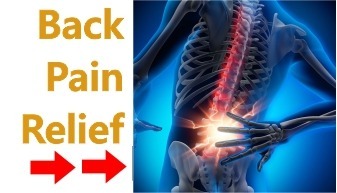This is a reprint from https://www.cigna.com/individuals-families/health-...
We are bringing this issue to your attention since we sell ergonomic chairs. These Steelcase Leap Chairs are certainly a solution for the issues discussed herein.
What is ergonomics?
Ergonomics (say "er-guh-NOM-iks") is the study of the kind of work you do, the environment you work in, and the tools you use to do your job. The goal of office ergonomics is to set up your office work space so that it fits you and the job you are doing.
When your workstation is set up right, you may:
- Be less likely to have problems such as headaches or eyestrain.
- Reduce neck and back pain.
- Prevent bursitis or tendon problems that are linked to doing the same task over and over (repetitive tasks).
Why should your work area be ergonomic?
It's common for injury and illness to happen at work. Both can cost you and your employer time and money. They can also affect how well you do your job.
Most on-the-job injuries are caused by:
- Falls.
- Repetitive movements.
- The way you sit or stand (posture).
- Bending over, lifting heavy objects, or using pressure or force.
- Working with vibrating tools.
Office ergonomics can help you be more comfortable at work. It can help lower stress and injury caused by awkward positions and repetitive tasks. It focuses on how things are set up in your office work space, such as:
- Your workstation setup, how you sit, and how long you stay in one position.
- How you do a certain task, the kinds of movements you make, and whether you make the same movements over and over.
- Your work area, including light, noise, and temperature.
- The tools you use to do your job and whether they are set up to fit your needs.
What kinds of injuries happen at work?
Most injuries that happen at work are caused by physical stress and strain, such as sitting in the same position for a long time, making repetitive movements, and overuse. These injuries can cause stress and strain on your muscles, nerves, tendons, joints, blood vessels, and spine.
Symptoms can include pain in your:
- Back.
- Hand, wrist, or arms.
- Neck and shoulders.
You could also be at risk for problems such as tendinopathy and bursitis.These are caused by overuse and repetitive movements. Over time, these kinds of movements can make you feel bad. They can cause long-term health problems. And they use up your sick time.
You may be at greater risk for injuries at work if you have other health problems, such as arthritis or emotional stress.
How can you prevent injuries at work?
Here are a few ways you can prevent injuries at work:
- Try to place your work in front of you and sit tall while you work.
- Try not to put too much stress on one area of your body, such as your lower back or arms.
- Change your position often.
- Turn with your whole body instead of twisting to face your work.
- Take breaks to stretch or get out of your chair every 20 to 40 minutes. If you can, switch to another task.
What can you do if you have a work-related injury?
You can try home treatment for a few days when you first notice symptoms. Try to:
- Rest the painful area and avoid activities that make your pain worse.
- Use ice to reduce pain and swelling. You can try heat, or alternating heat and ice, after about 3 days or when there is no swelling.
- Take over-the-counter medicines to relieve pain.
- Use good posture, which generally means that your ears, shoulders, and hips are in a straight line. Slumping or slouching after a strain or injury in your back can make back pain worse.
If you've tried home treatment for several days in a row and it hasn't helped, call your health care provider. You may need physical therapy or other treatment to prevent more injuries.
To help prevent another injury, review your work area. Be sure it is set up in the best way possible to fit you and the job your are doing. You may be able to get more information about workplace safety and ergonomics from your human resources department at work or from your state's Department of Labor.




